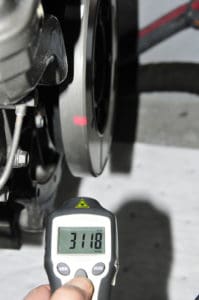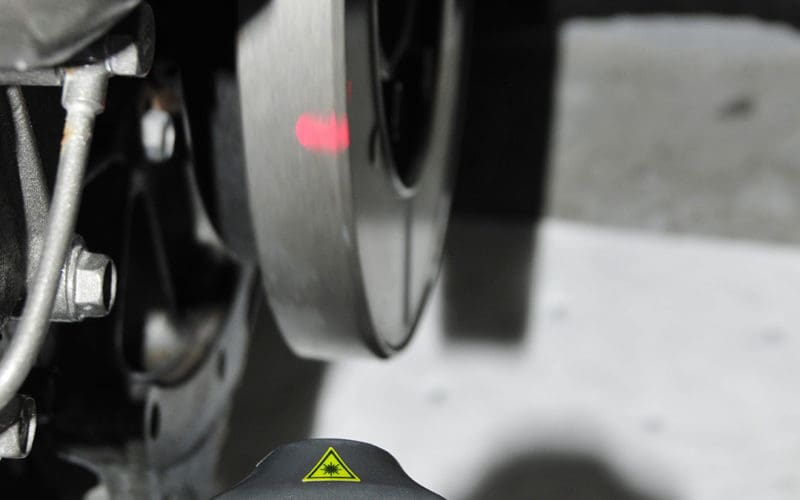
A few years ago, I was carrying out a sea trial aboard a single screw trawler that a client of mine was considering for purchase. Part of the process involves running the vessel at full or wide-open throttle, what engine manufacturers often refer to WOT. In the case of this engine model, the manufacturer specified that a WOT test can be performed for 30 minutes without any ill effects. In some cases, there are no limits, in others the duration may be shorter.
For professionals and owners alike, preparing a power voyaging boat for a cruise, whether that’s a day jaunt around the bay or an offshore passage, carries with it a variety of important responsibilities, not the least of which is ensuring the engine will operate reliably. The goal of such a trial is to reveal any latent defects in the engine or its associated systems so they can be dealt with.
Every marine engine, whether it’s a tender’s outboard or a 1,000-hp diesel, carries a WOT rating established by its manufacturer; it’s the rpm the engine is designed to turn up to when the throttle is pushed to its limit. For conventionally fuel-injected diesels successfully carrying out this test involves making certain the throttle lever on the fuel injection pump reaches its stop. For electronically-controlled engines, the user must ensure that the engine instrument display indicates 100% load. Ideally, WOT sea trials should be carried out with the vessel in cruising trim, i.e., at least 50% fuel and 100% water and all cruising stores aboard.
Reasons for the test
There are several reasons for carrying out such a test. Among these is to ensure that the propeller (and transmission reduction gear) is properly matched to the engine. If a propeller has too much pitch, is too large in diameter, has too many blades or has too much blade surface area for a given engine application, it will prevent that engine from reaching its WOT rating.
In the case of a mechanically-injected engine, an “over-wheel” situation (too much pitch, too much diameter, too many blades, etc.) will lead to a phenomenon known as over fueling. This means more fuel is injected into the cylinders than can be efficiently burned, which results in poor fuel economy, cylinder coking and black smoke. For electronically-controlled engines, over propping will often be recognized by the electronic engine control, which leads to an automatic reduction of fuel being injected into the cylinder, thereby protecting the engine from damage and minimizing smoke. The scenario may protect the engine but it is an undesirable state of affairs. In effect, the computer de-rates the engine, which means a 450-hp engine becomes a 380- or 400-hp engine, without that fact being immediately obvious, especially if the problem has existed from the day the boat was built, or for as long as an owner may have possessed the vessel. If that’s the way it’s always been, it’s difficult to identify the problem. It’s important to remember that even if you never intend to operate the engine at WOT, ensuring that it can achieve this rpm is critical, it means the propeller is properly matched to the engine throughout the rpm range and that the overall installation is sound.
Another reason for ensuring the engine can achieve and maintain WOT involves the cooling system. A sure way to determine the health of an engine’s cooling system is to operate it at WOT. The engine should not overheat yet, many engines I test are incapable of operating for more than a few minutes before the temperature gauge begins to creep into the red. I’ve heard this explained away many times as normal, or I’m told that engines aren’t designed to operate at this load. Nothing could be further from the truth, if an engine overheats at WOT something is wrong with the engine or the installation. The exhaust system must also be included in the WOT overheat test. It’s possible for it to overheat while the engine runs at a normal temperature. During a WOT run, the dry and wet portions of the exhaust system should be tested using an infrared pyrometer. Any temperature greater than 150°F (technically 200°F for ABYC compliance, however, that’s for burn protection and not an evaluation of exhaust system functionality and cooling) in the “wet” portion of the system is cause for concern. Any portion of the dry exhaust that can be touched shouldn’t exceed 200°F.
Obstructions and overheating
The reasons for WOT overheating include clogged heat exchangers, worn out impellers and pump cams, obstructed exhaust systems (remember, all cooling water typically exits through the exhaust, if it’s restricted it slows down all water flow) or, most insidiously, a flaw in the raw water intake system’s design. It’s not unheard of for new vessels to overheat when run at WOT. In most cases the problem is in the size or design of the intake plumbing.
Typically, when an engine fails to reach WOT the first reaction of the builder, yard or owner is to yank the propeller off and have the pitch adjusted. In fact, this is the last action that should be taken. Prior to adjusting the propeller, the exhaust system backpressure should be checked. If it’s too high it will lead to a reduction in RPM that pitch reduction will simply mask. The engine must be checked to ensure it’s in good working order, that there’s unrestricted air and fuel flow and, for older engines fuel injection systems should be scrutinized and the valves should be checked to make certain they are correctly adjusted. Once those have been ruled out, then propeller pitch may be adjusted to correct WOT issues.
Finally, part of the WOT test involves determining the engine’s governed RPM, that is, at what rpm will the engine limit itself to prevent damage? Typically, this is 50 to 100 rpm above the WOT. Before performing a WOT test, which should only be carried out on engines that are believed to be in good working order, put the engine in neutral, then advance the throttle to its maximum setting for a few seconds to determine the governed rpm. If, during the subsequent fully-loaded WOT test the engine once again reaches the governed RPM, the propeller is likely under-pitched, has too few or too small blades, or the diameter is too small. While over-revving isn’t as detrimental as under-revving, it still represents a fault, and loss of efficiency, that should be corrected. Ideally, when fully loaded and in cruising trim an engine should turn to its loaded WOT rating and ideally 20 to 40 rpm more. n
Steve D’Antonio works with boat builders, owners and others in the industry as Steve D’Antonio Marine Consulting. He is an ABYC-certified Master Technician and sits on that organization’s Engine and Powertrain, Electrical and Hull Piping Project Technical Committees.

